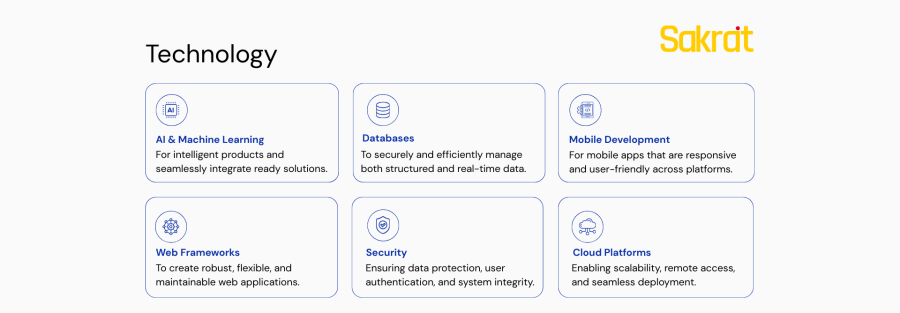The Economic Forecast for the Tech Industry Outlook in 2026 and Beyond
After navigating the turbulent headwinds of high inflation and macroeconomic uncertainty from 2022 to 2024, the technology industry has emerged leaner, more focused, and primed for a significant new phase of growth. The era of “growth at all costs” has been replaced by a strategic focus on efficiency and tangible innovation.
Looking ahead to 2026, the economic outlook for the tech sector is not just optimistic; it’s being actively reshaped by powerful secular trends, with generative AI chief among them. While challenges remain, the industry is entering a period of robust, enterprise-driven expansion.
The Engine of Growth: AI, Cloud, and Semiconductors
The rebound in the tech economy is not a uniform recovery but a targeted surge in specific high-growth areas.
- The Generative AI Explosion: This is the single most powerful economic driver for the industry. Worldwide spending on AI is projected to grow at a compound annual growth rate (CAGR) of 29% from 2024 to 2028. This isn’t just about software; it’s fueling a massive demand for the specialized hardware needed to run it.
- The Semiconductor Supercycle: The semiconductor industry, which had a strong 2024, is expected to see double-digit revenue growth in 2025 and beyond. This boom is almost entirely driven by the insatiable demand for generative AI chips—a complex mix of GPUs, CPUs, and custom accelerators. While consumer-facing markets like PCs and smartphones are expected to see only low single-digit growth, the demand for data center and AI-related chips continues to soar.
- Resurgent IT and Cloud Spending: After a period of cautious spending, enterprises are reopening their wallets. Global IT spending is projected to grow by 9.3% in 2025, with software and data center segments leading the charge with double-digit growth. This reflects a renewed urgency among businesses to invest in digital transformation, cloud infrastructure, and cybersecurity to stay competitive.
Key Economic Battlegrounds and Challenges for 2026
While the growth outlook is strong, the landscape is not without significant economic and geopolitical challenges that will define corporate strategy.
- The Soaring Energy Demands of AI: The AI boom comes with a colossal energy cost. By 2026, global data center electricity consumption is expected to reach 681 terawatt-hours, accounting for 2.5% of total global electricity use. Tech companies are under intense scrutiny to meet carbon neutrality goals, forcing massive investments in energy-efficient data centers, innovative cooling technologies, and alternative energy sources like modular nuclear reactors. This “green computing” imperative is becoming a major economic factor.
- The Talent Shortage Becomes Acute: The demand for skilled AI, cybersecurity, and semiconductor professionals far outstrips supply, creating a fierce and expensive global talent war. This shortage is a significant constraint on growth and is forcing companies to invest heavily in upskilling, automation, and “citizen developer” platforms to bridge the gap.
- Geopolitical Tensions and Supply Chain Resilience: The escalating geopolitical tensions surrounding technology, particularly in the semiconductor industry, are forcing a fundamental rethinking of global supply chains. Companies are moving from a “just-in-time” to a “just-in-case” model, investing billions to diversify manufacturing, relocate facilities to less vulnerable regions, and build more resilient, geographically diverse operations.
The Shifting Business Model: From Products to Platforms
Underpinning these trends is a broader economic shift in how tech companies create value. The focus is moving away from selling standalone products to creating integrated platforms and ecosystems.
- Advertising Dominates Spending: In the entertainment and media sector, advertising revenue is growing more than three times faster than consumer spending, driven by the explosive growth of ad-supported streaming (AVOD) and internet advertising.
- The Rise of the “Citizen Developer”: The talent shortage is accelerating the adoption of low-code/no-code platforms. By empowering non-technical employees to build their own applications and automate workflows, companies are unlocking new sources of innovation and productivity without having to rely solely on their IT departments.
Conclusion: A New Era of Strategic Growth
The tech industry of 2026 will be more resilient, more efficient, and more strategically focused than the industry of the early 2020s. The speculative froth has dissipated, revealing a sector driven by real enterprise demand and transformative technological shifts. While navigating energy costs, talent shortages, and geopolitical risks will be paramount, the fundamental economic outlook is strong. The AI revolution is not just a trend; it is the engine of a new economic cycle that will fuel the tech industry for the remainder of the decade and beyond.
Is Your Business Aligned with the Future?
The economic landscape of technology is shifting rapidly. What worked yesterday will not guarantee success tomorrow.
Ready to align your business strategy with the growth drivers of 2026? Schedule a strategic review with our industry experts. We can help you understand how these macroeconomic trends will impact your specific sector and identify the key investments you need to make in AI, cloud, and talent to secure a competitive advantage.


